The Studio in 2008
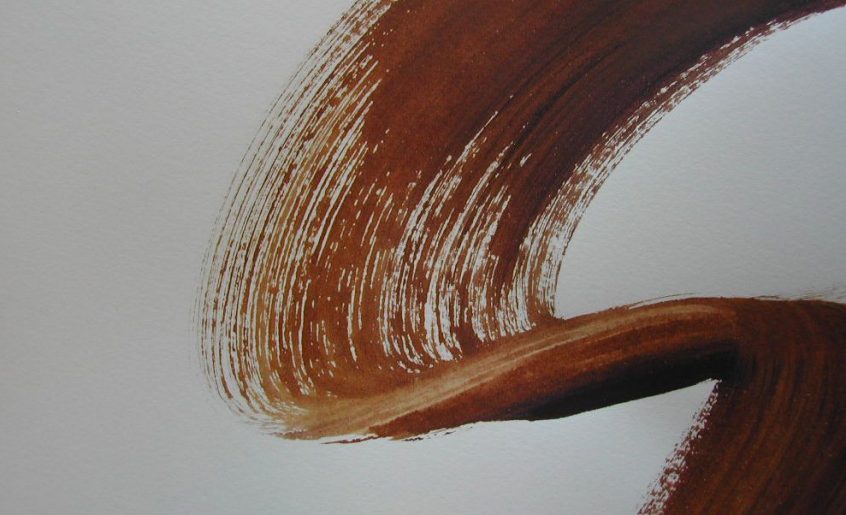
The ice age cave paintings give evidence that for thousands of years man has known that one can paint with earth. At university I was studying soil science. When we had field courses we would paint the colours of the horizons in the soils with a sample of that exact soil itself and writing explanatory notes beside them. The shades of the minerals would stay unaltered for a very long time. To me those earthen colours always had and still have a very special fascination.
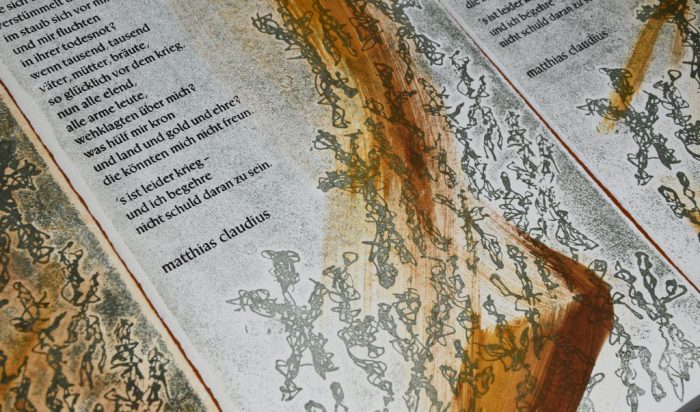
When, in 2000, Bookbinder-Colleg in Stuttgart offered a workshop on inks and colours as they were made in the Middle Ages, I signed up at once. A whole universe of new options opened up. Paper could be painted prior to printing or prints could be painted over, and this could be done in exactly the shades I so loved. In Farbmuehle Kremer I found the supplier of the earthen pigments I needed. Also, the names of those pigments came with their own stories: English Pit Ochre, Gray from Burgundy, Terra Pozzuoli, to name a few.
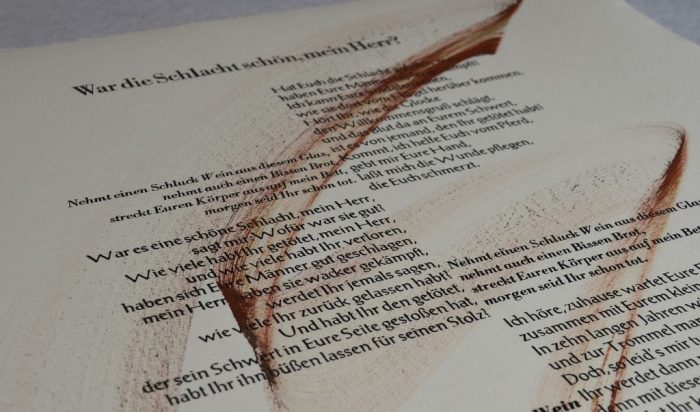
Using earthen pigments I created broadsides like „The Battle“, with shades of blood soaked soil, also the „Song of War“ by Matthias Claudius, and, in particular, the series of „Soil Letters“. This is a series of one-offs, painted with powerful brush strokes from warm shades of ochre and umbra. The idea is that these are messages sent to us by the soil in its very own writing.
Quite often we are not at all aware of the soil beneath our feet. It is always there, bearing us all. It is only after it gives way, after we lose the ground beneath our feet, or when the soil of a field fails to produce a crop, we realize how basic, how, quite literally, the soil is fundamental for us.
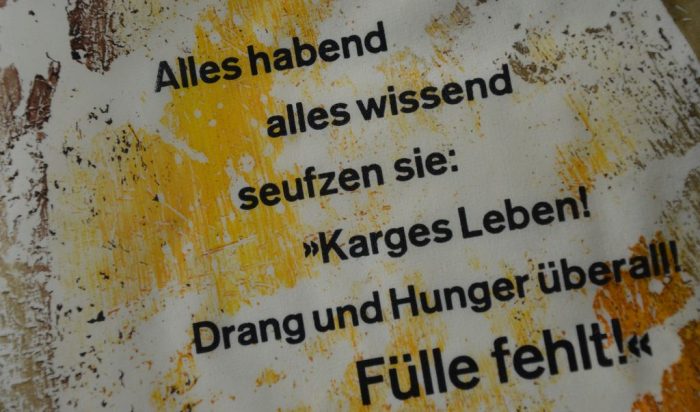
I am still experimenting with ways to give printed text a coloured background. To achieve this, colour needs to be applied prior to printing. Painting the sheets with earthen pigments is only one of many ways of doing this. Another variant is paper batiks. In this case, parts of the sheet will be covered with a medium, which prevents the colour from binding with the paper. Then the chosen colours are applied. Prior to printing whatever has been applied to block the colour needs to be removed. I tried out wax, which has the side effect to render the paper partly translucent. However, wax needs to be thoroughly removed, by rather time consuming hot ironing, otherwise the oil-based ink used for printing will not be able to connect with the paper. Each sheet thus created is a one-off. In this manner the broadsheet „Alles habend“, a poem by Stefan George, is created.
Briefly noted:
Exhibiting at Leipzig Bookfair
Exhibiting at 9th Buch-und Handpressenmesse in Frauenfeld (Switzerland)
Exhibiting at 7th Buchmachermarkt in Mosbach
Exhibiting at Landesgartenschau in Neu-Ulm during the Week of Roses
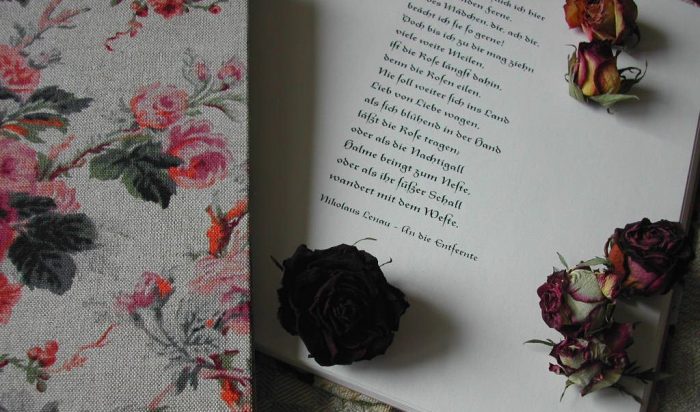
Part of the exhibition „Birds, Bird Books and Bookbinding“ in Bath (UK)
Published in 2008:
„Carrbridge II“ lino etching from 2 blocks
„Schwarze Rose“ lino etching
„Alles habend“ broadside, poem by Stefan George, paper batik
„Kriegslied“ broadside, poem by Matthias Claudius, lino etching painted over with earthen pigments
„Wüßt ich“ broadside, poem by Hugo von Hofmannsthal, woodcut
„Die Schlacht“ broadside, Folksong, painted over with earthen pigments
Series of „Soil Letters“ painted with earthen pigments, one-offs
Contact
Buch- und Handpressenmesse Frauenfeld: Atelier Bodoni/Waldgut Verlag
To be continued on 29 April 2024
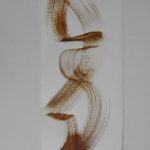
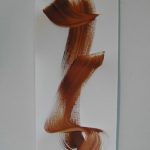
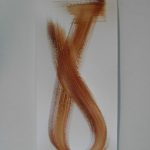
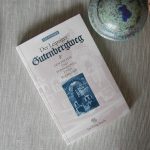
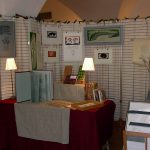

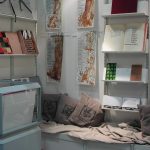
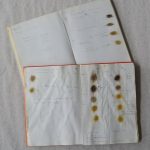


I just love the idea of the soil letters. The red soil of Central Australia would be wonderful for you to use. Shame that this region is so far away from me, to send you a little bag of this red sandy soil.